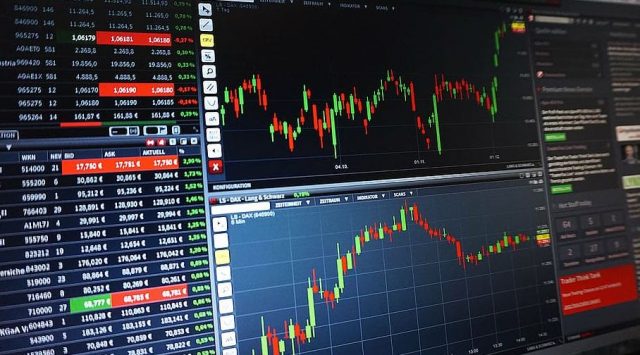Stock market indicators are ratios and formulas that investors use to carry out technical analysis of current stock gains and losses. They then use this analysis to predict future price changes that might occur in the short-term or long-term.
Let’s consider some of the best must-know stock market indicators that anyone new to the market should make a point of learning:
Relative Strength Index (RSI)
A relative strength index (RSI) is a momentum indicator that appears as a line graph denoting movements between two extreme price positions. Oscillating between 0 and 100, the RSI measures the magnitude of the recent rise or fall in price. Its upper line is usually at 70, and if the RSI crosses this, the stock is overbought. We can call the stock oversold if the price falls rapidly, and the RSI goes under its lower line of 30. The middle line is at 50.
The RSI level gives a reliable finding of the stock’s recent trending strength. The RSI generally has a 10 to 20 days look-back period. To calculate the RSI, you can divide the number of gains or losses with the number of periods. You can use the RSI divergence indicator to discover if the RSI is diverging from the current stock price trend and then decide if you should buy or sell the stock.
Average Directional Index (ADX)
You can measure the overall trend strength of a market with the average directional index (ADX). It is a part of Welles Wilder’s directional movement system, which uses the ADX and the 14-day-period positive and negative directional movement index to measure the strength of a price movement. If the ADX value starts moving above 25, the trend is strong. However, if it starts to move below 20, it indicates that that the trend is weakening or ending.
Bollinger Band
The Bollinger Bands are technical trading indicators that follow and monitor market trends. They consist of a centerline that is a simple moving average for a specific period and two bands charting the daily price movements. The upper band shows high prices, and the lower one indicates low prices. If the markets are volatile, the bands will expand, and they will contract otherwise.
Fibonacci Retracements
A Fibonacci retracement is a technical trading tool that makes use of the 13th-century mathematician Leonardo Fibonacci’s key ratios of 23.6%, 38.2%, 61.8%, and 100%. With Fibonacci retracements, you can identify significant price points and also predict support and resistance levels. After pinpointing the high and low points on the stock chart, you can measure the vertical distance between these points and divide that by 23.6%, 38.2%, 61.8%, and 100% to find possible support and resistance levels. You can then determine how much a market might retrace before resuming its trend.
Moving Averages
Moving averages help calculate closing market prices and low, high, and open ones over a specific period. To get accurate prices, you use the latest available data and discard older data, and, so, the term moving average. They offer a directional understanding of the current market trends and indicate if you should buy or sell the stocks.
With these stock market indicators, you can develop a good understanding of the stock market and make profitable investments.

A professional writer with over a decade of incessant writing skills. Her topics of interest and expertise range from health, nutrition and psychology.


